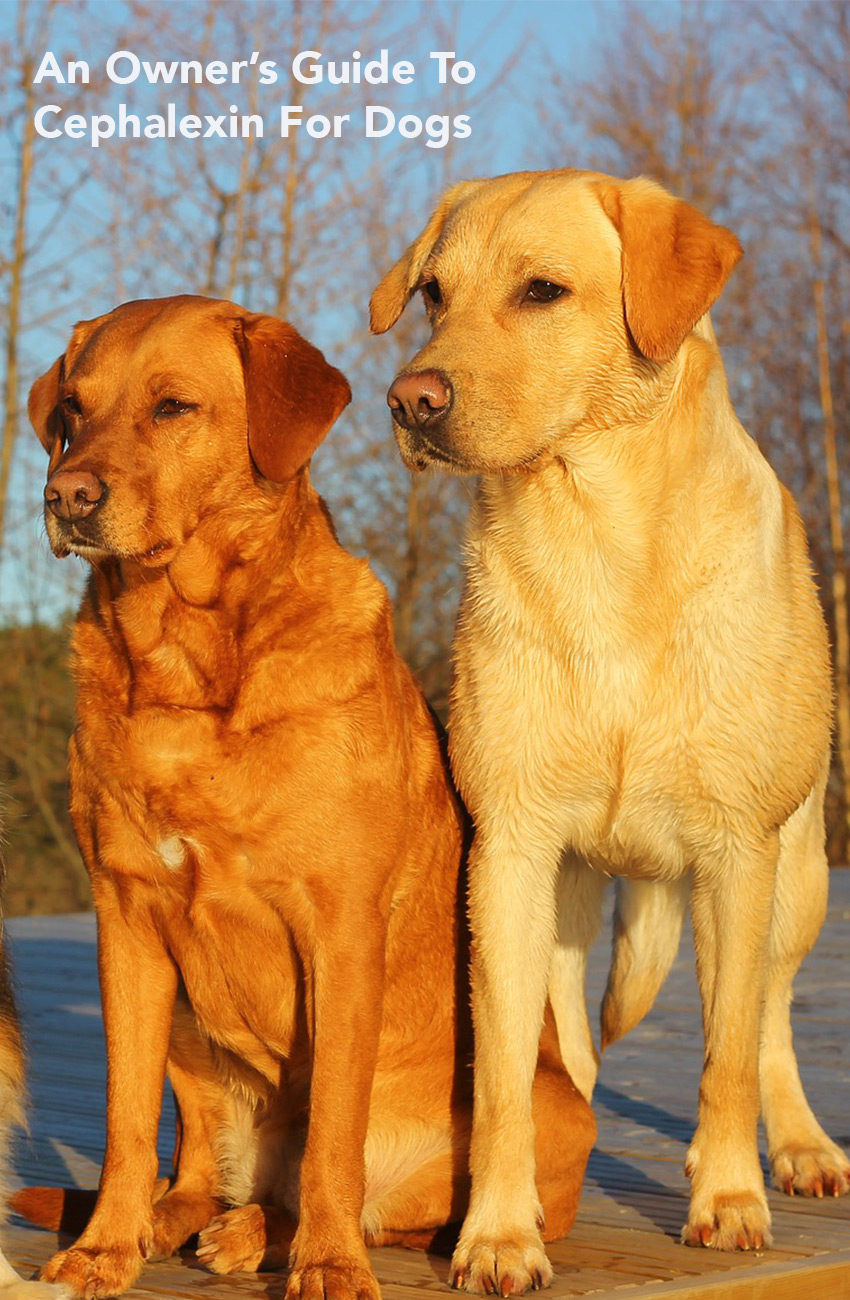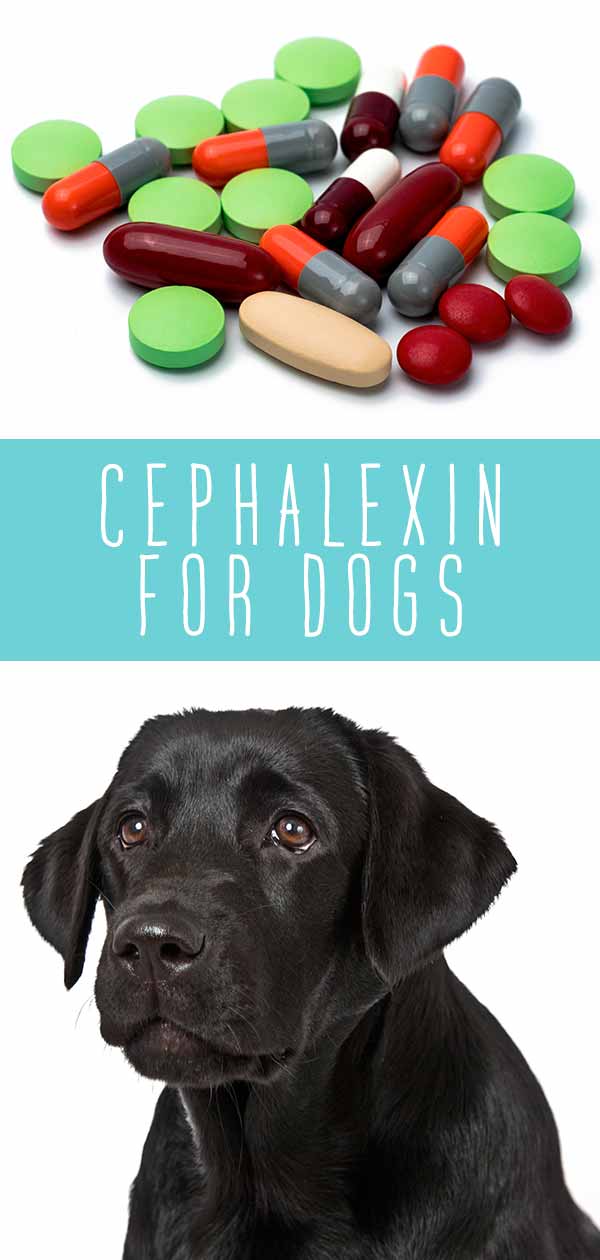Cephalexin For Dogs – How It Works, Side Effects and Dosage
Cephalexin for dogs is a broad-spectrum antibiotic. Cephalexin is predominantly used to treat S. Aureus infections in dogs, the bacterium commonly found in skin infections, wounds and hot spots. Canine Cephalexin is effective against gram-positive and gram-negative bacteria. It works by rupturing the cell walls.
The drug is marketed under various trade names including; Keflex, Keftab, Rilexine, Sporidex and Biocef. Cephalexin for dogs can be given in liquid, tablet or capsule form.
Dogs’ Cephalexin is a first generation cephalosporin, a type of antibiotic similar to penicillins but not in the same family, which makes it a good choice for those with a penicillin allergy too. Cephalexin is not FDA approved for use on dogs, but is allowed to be prescribed by veterinarians under extra label provisions. It is effective against a wide range of other canine bacterial infections and has relatively few side effects.
What is Cephalexin used for in dogs?
Cephalexin treats a wide range of canine bacterial infections. It is the most useful antibiotic in the veterinary toolbox.
If your dog gets into a fight or otherwise experiences a wound or abscess, the vet may prescribe Cephalexin. S. aureus is often found in skin infections, such as pyoderma or hot spots. Along with cephalexin, your vet may prescribe a topical antibiotic treatment along with special shampoos.
Cephalexin for dogs is effective and cheap!
Another advantage of Cephalexin in dogs is that the medication is relatively inexpensive. Prompt treatment with cephalexin may prevent your dog from developing a secondary infection.
Effective and inexpensive. That’s a combination hard to beat. The FDA has not approved it for use in dogs or any other animals. Veterinarians, however, are allowed to prescribe it under “extra label” provisions.
Cephalexin for infections in dogs
Cephalexin is useful for lots of infection, especially against Staphylococcus aureus infections. Other bacteria eradicated by Cephalexin include:
- E. coli
- Haemophilus influenza
- Klebsiella pneumonia
- Proteus mirabilis
- Streptococcus pneumonia and Streptococcus pyogenes
Veterinarians may prescribe Cephalexin for dogs diagnosed with skin, urinary tract, ear, joint and respiratory tract infections.
Cephalexin dosage for dogs with infections?
The typical Cephalexin dosage for dogs is 10 to 15 mg for each pound of body weight. That means a 50 pound animal may receive Cephalexin 500 mg for dogs. Cephalexin tablets are prescribed to be taken two to three times a day, depending on the condition being treated.
The importance of consistent doses
A few studies have looked at the spacing of doses in varying concentrations. At doses of 20mg/kg, a 1999 study showed that in order to maintain therapeutic concentrations, it needed to be administered every six to eight hours.
A 2008 study compared 30mg/kg Cephalexin given once daily, with 15mg/kg Cephalexin given twice daily. It found no difference between the groups. Both treatments resolved the superficial pyoderma in the 14 dogs sampled.
This shows that Cephalexin treatment schedules may vary depending upon the dosage chosen, but that they should still all be effective. The important thing is to do exactly as your vet instructs.

Other preparations of Cephalexin for dogs
Cephalexin is available in liquid, tablet and capsule forms. As always, make sure you stick to your vet’s instructions for the best and safest results.
You might have a Cephalexin capsule at home for example that you would like to treat your dog with. You’re right in thinking the active ingredients are the same. However, the ingredients that make up the capsule may be toxic to your pooch.

Side effects of dog Cephalexin?
Cephalexin for dogs can make some feel nauseous, vomit or have diarrhea. Adding it to a meal will usually solve this problem.
Other potential side effects of Cephalexin in dogs include drooling, hyper-excitability and excess panting. Contact your vet if your dog exhibits any side effects. Also let your veterinarian know of any other medications or supplements your dog takes, as a drug interaction is possible.
There are no exact figures for what might constitute a toxic dose. However, the manufacturers suggest that doubling your dog’s dose may be toxic.
Can Your Dog Overdose?
An overdose of Cephalexin in dogs is not likely to cause serious harm. However, it increases the likelihood of side effects. That’s especially true of gastrointestinal issues.
How long can dogs take Cephalexin for?
Most dogs do not receive this treatment for long-term use. That’s because long-term use of Cephalexin in dogs may lead to kidney or liver issues. Blood platelet counts may also decrease. Most dog Cephalexin prescriptions run for seven to 10 days.
Contraindications
Cephalexin is contraindicated in some dogs. Dogs with renal failure, epilepsy or that are pregnant or nursing should not take Cephalexin.
Rarely, Cephalexin in dogs causes lameness or motor issues. These incidents occur most often in large breeds, and generally those bigger than Labrador retrievers. If you have a very large Lab, ask your vet about whether your dog can take cephalexin.
What If It Doesn’t Work?
Although it is a broad-spectrum antibiotic, it may not treat your dog’s condition. For example, Cephalexin is not effective against Enterobacter. This bacterium often causes canine skin, urinary tract and eye infections.
Giving your dog Cephalexin for such infections would not help the dog and could cause resistance. So, your dog may not respond to Cephalexin when he really does need the drug.
Always remember that antibiotics do not work against viruses. And if your dog has a viral, or fungal infection, Cephalexin is not effective. Only testing by a vet will reveal the source of your dog’s ailment.

Free Labrador Updates!
Get my training tips, news, reviews, and the latest from The Labrador Site delivered to your inbox




My lab weighs 80 pounds. The vet prescribed cephalexin 2 500mg tablets twice a day for 14 days. That’s 2000mg per day. Is this overkill? Is it safe? She is now sleeping most of the day
Same question here. But I don’t see any reply.
My dog is 100 pound, sensitive stomach. Vet prescribed Cephalexin capsules 500 mg.
Two capsules every 8 hours.
2,000 mg seems to be extreme to me.
And he has her on for 21 days!!
Treatment for a hotspot and history of skin issues. ( yeast infection)
Which I keep under control with good diet and using a AntiFuncal dog shampoo.
I also give Probiotics.
All this medication makes me concerned.
If you can give a update even though your post was done in 2020.
My Golden Retrevier get hot spots that become smelly and scabby after a few days of 500mg every 12 hrs of Cephalexin she begins to heal. The only side effect is her stool gets alittle softer. I keep her on it for 10 days. She weighs 100lbs. I only treat her condition 0nce or twice a year with this drug. It works great.
My dog was diagnosed by uga vet training hospital in ga as having degenerative kidney disease. Another vet had her on cephalexin for a foot infection (sore). Is it ok to give her this antibiotic since she has now been diagnosed with kidney issues?
This Lab site is really nice , they are clear and concise with their explanations, I will use it for reference from now on.